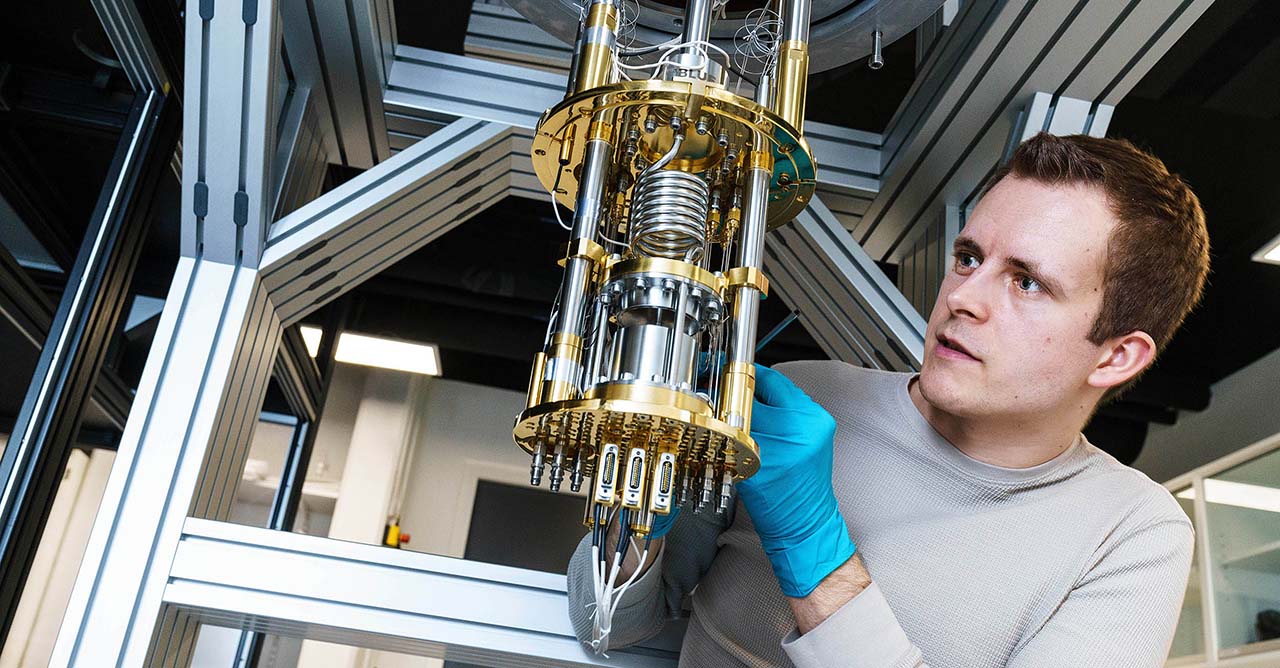Quantum
internet
Building a secure quantum internet
A quantum internet is a radically new technology that connects (quantum) devices, such as quantum computers, over large distances. This will allow for novel innovations, including levels of privacy, security, and computation power that are impossible to achieve with today’s internet. At QuTech, our mission is to provide the enabling technology for the future quantum internet and showcase the very first fully functional quantum networks.
We are unique in that we’re working on every single aspect necessary for realizing quantum networks: we’re developing the software, the interface between software and hardware, and the hardware.
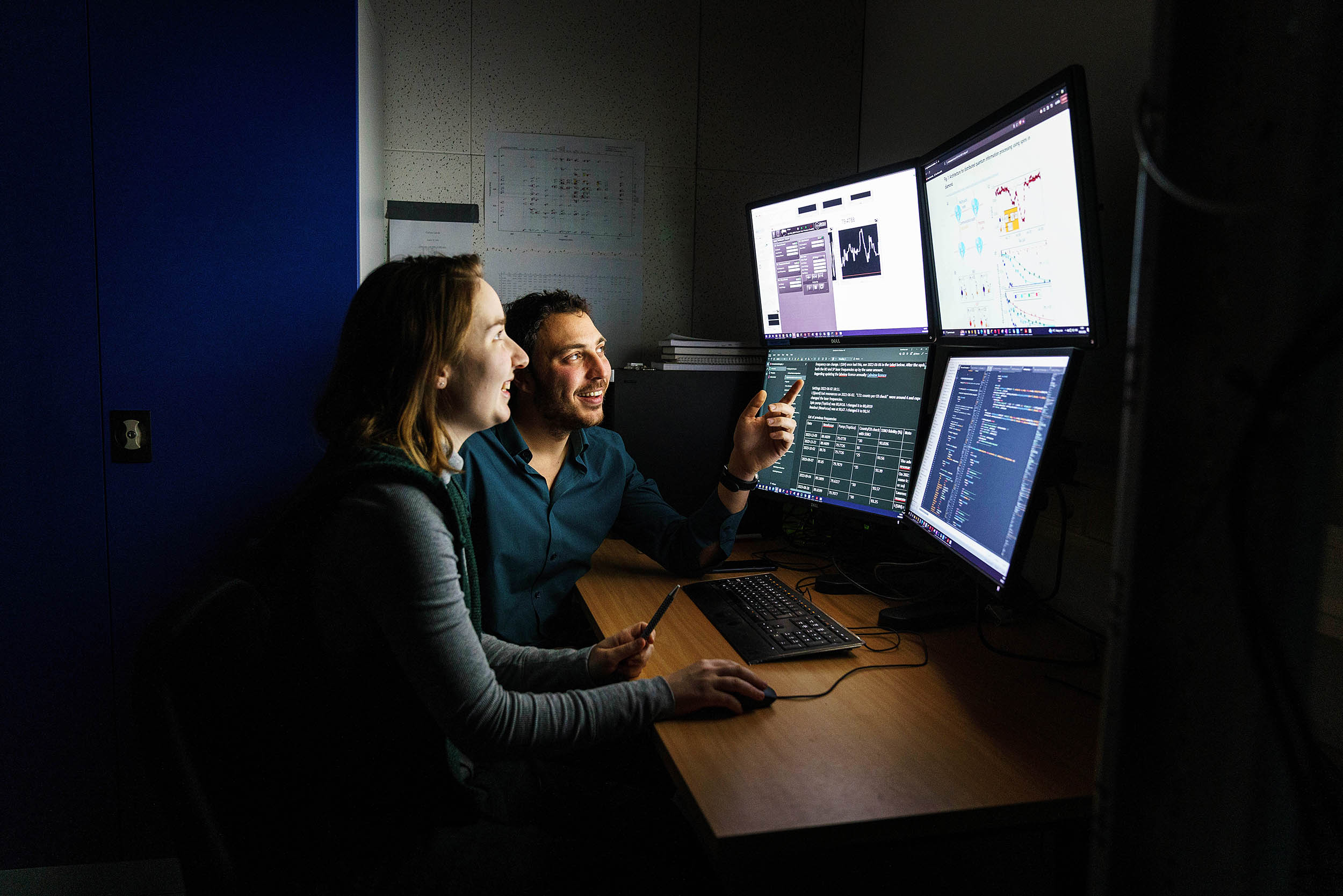
Quantum network protocols and application
Long-term goal:
To develop a full quantum network stack and novel applications for a quantum internet.
Highlights
We developed a software architecture of a metropolitan hub that allows the connection of many users inside a metropolitan quantum network in a cost-effective and scalable fashion (IEEE TGE). Key in this architecture is an algorithm to map user demand to a time allocation of resources at the hub. An IDF was also filed.
To generate entanglement over long distances as fast as possible using quantum repeaters, an important question is how the repeater should make decision on when to produce entanglement, when to swap, when to keep entanglement for later use, or when to expire entanglement - this is known as a policy. We developed an algorithm to compute optimal policies given knowledge of the state of entanglement generation of a chain (npj Quantum Information).
We developed a framework for Quantum Network Utility Maximization that can be used to reliably and fairly service the needs of multiple contemporaneous applications running on a quantum network (IEEE QCE 2023).
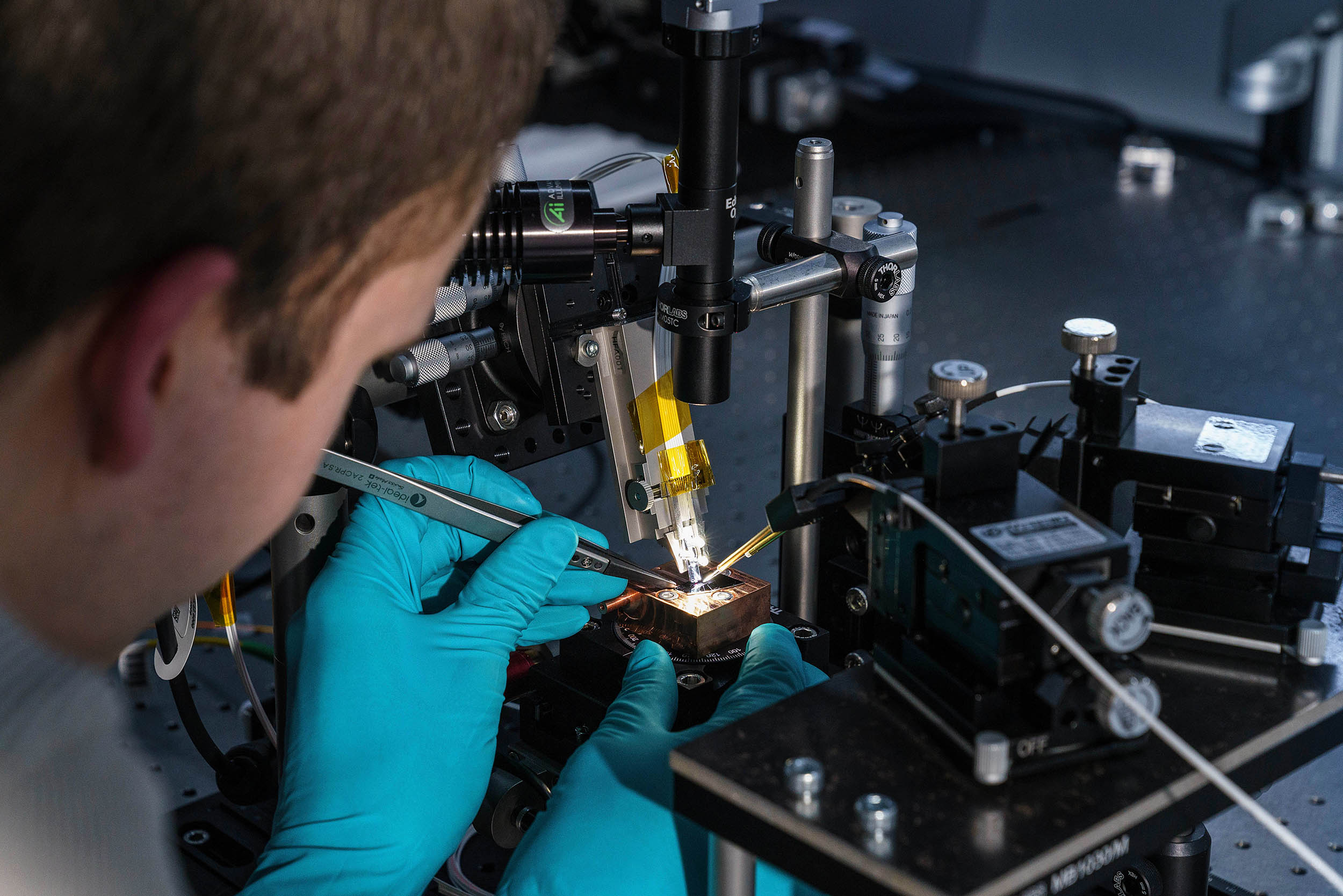
Quantum network hardware
Long-term goal:
To provide experimental demonstrations that push the frontier of quantum networking hardware and yield new enabling technologies and insights.
Highlights
We developed next-generation quantum network node devices based on tin-vacancy (SnV) centres in diamond, coupled to on-chip photonic waveguides, and investigated the interaction with light at the single-photon level (arXiv). The efficient coupling of spin qubits in diamond to photons is a key step towards quantum networks with higher entanglement rates.
At the heart of our envisioned quantum networks is the creation of entanglement between nodes and quantum processors using photons. We developed in-depth theoretical and experimental knowledge on the so-called single-photon entangling protocol and its various sources of infidelity (New J. Phys.). This detailed understanding of the workhorse protocol for quantum networks provides new opportunities to optimize entanglement links.
We achieved the coherent coupling regime for colour centre qubits coupled to an open microcavity (arXiv). This work establishes a versatile and tuneable platform for advanced quantum optics experiments and proof-of-principle demonstrations towards quantum networking with solid-state qubits.
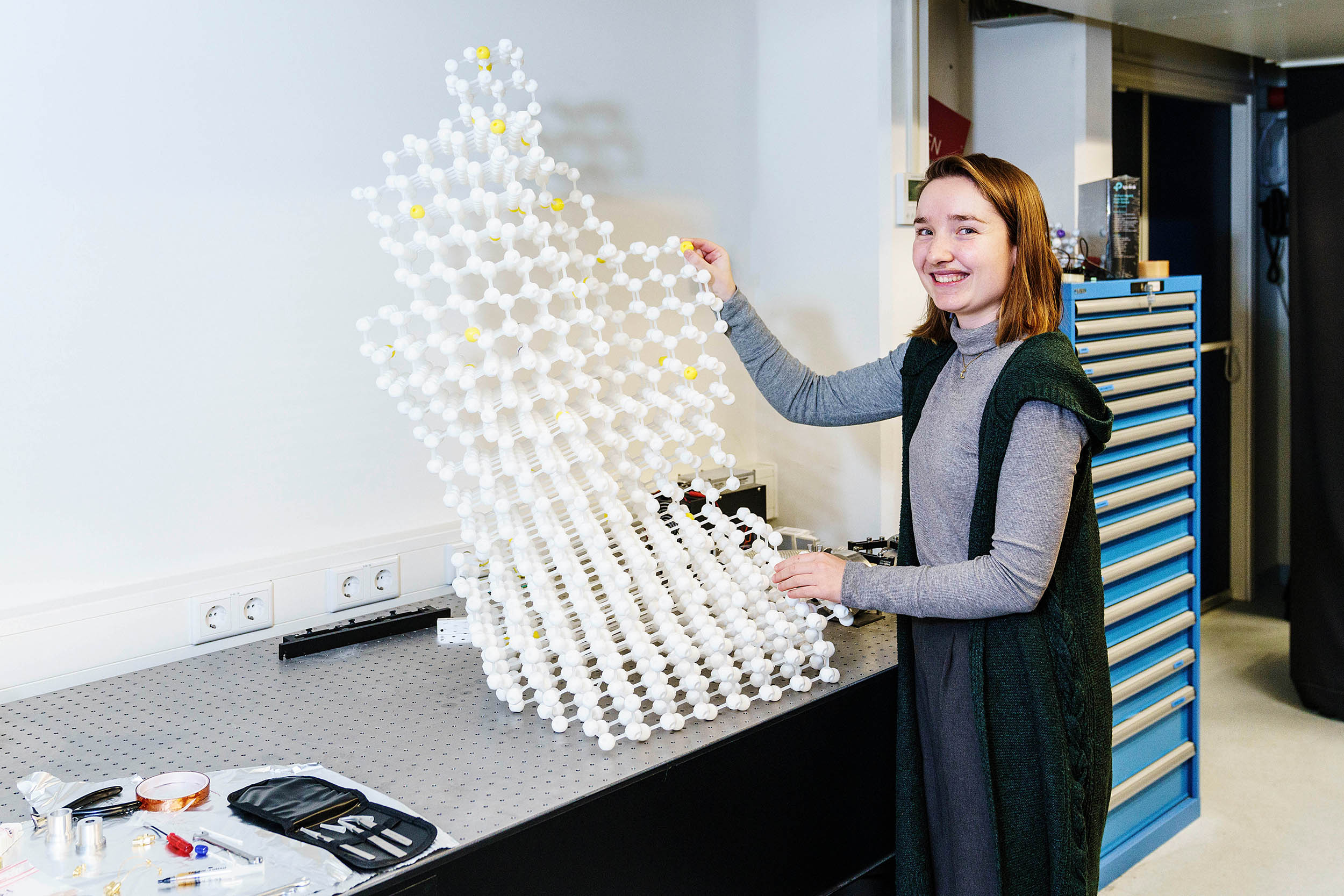
Quantum processors for quantum networks
Long-term goal:
To develop and exploit multi-qubit quantum processors for use in a quantum internet and networked computing.
Highlights
We developed numerical simulations that determined the fault-tolerance threshold for the distributed surface code in the presence of quantum memory decoherence (arXiv). The developed model sheds light on the effect of coherence times during entanglement generation. The threshold values obtained provide target values for experimental progress towards fault-tolerant distributed quantum computation.
We developed new methods to characterize and initialize multi-qubit quantum processors based on spin qubits in diamond. We characterized a 50-spin-qubit processor by mapping the full network of the 1225 qubit-qubit interactions, providing new opportunities for quantum simulations and the optimization of multi-qubit processors for quantum networks (arXiv, Nature Comm.). A patent application was filed for the newly developed characterization method. Additionally, we investigated the initialization of such processors through hyperpolarization (Phys. Rev. Research).
A key challenge towards larger-scale quantum networks and processors is to realize high-quality quantum gates. We realized universal high-fidelity gates for spin qubits in diamond, with single-qubit gate fidelities up to 99.999% and two-qubit gate fidelities up to 99.93% (arXiv). These record gate fidelities are an important step towards larger-scale quantum algorithms and error correction with spin qubits in diamond.
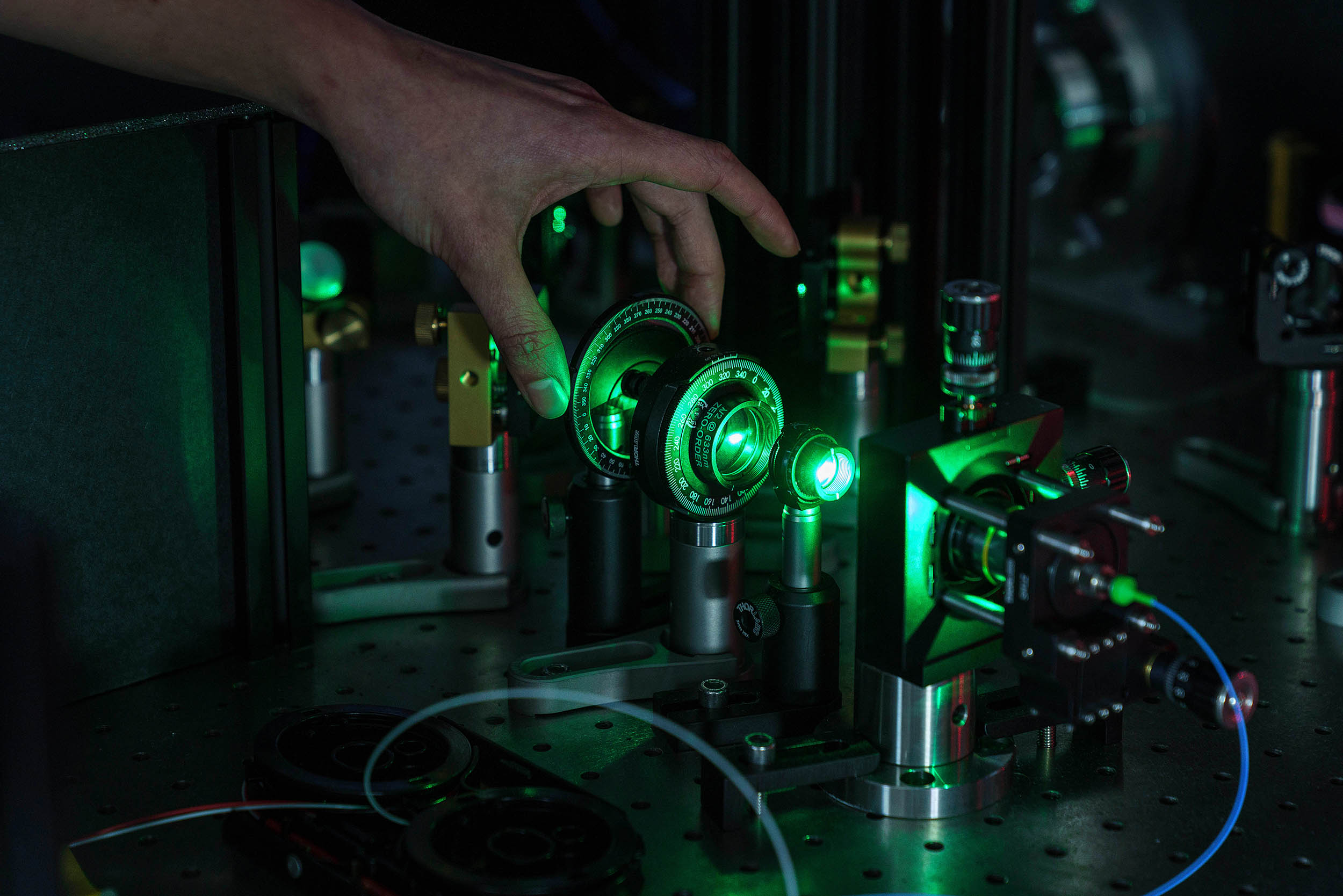
Quantum Network Explorer: unlocking the power of quantum networks
Long-term goals:
To showcase the world’s first quantum internet, make quantum internet technology accessible to the public, and build and engage a global community.
Highlights
2023 was a year in which we focused on further infrastructure improvements for QNE. We started integrating AI into the QNE web platform. Visitors can now ask questions about the platform and ASKAI will formulate an answer based on the content of the website. Also, we have added an ‘Enhance’ feature which takes the contents of an application description and then reformulates the simulation execution steps for a better understanding of the steps needed. More AI supported features are on track for 2024.
Based on contributions from our community at a hackathon organized by QIA in the last quarter of 2023, we added four new Community Application Library entries in QNE, which can act as great icebreakers for users who would like to dip their toes in quantum networking.
